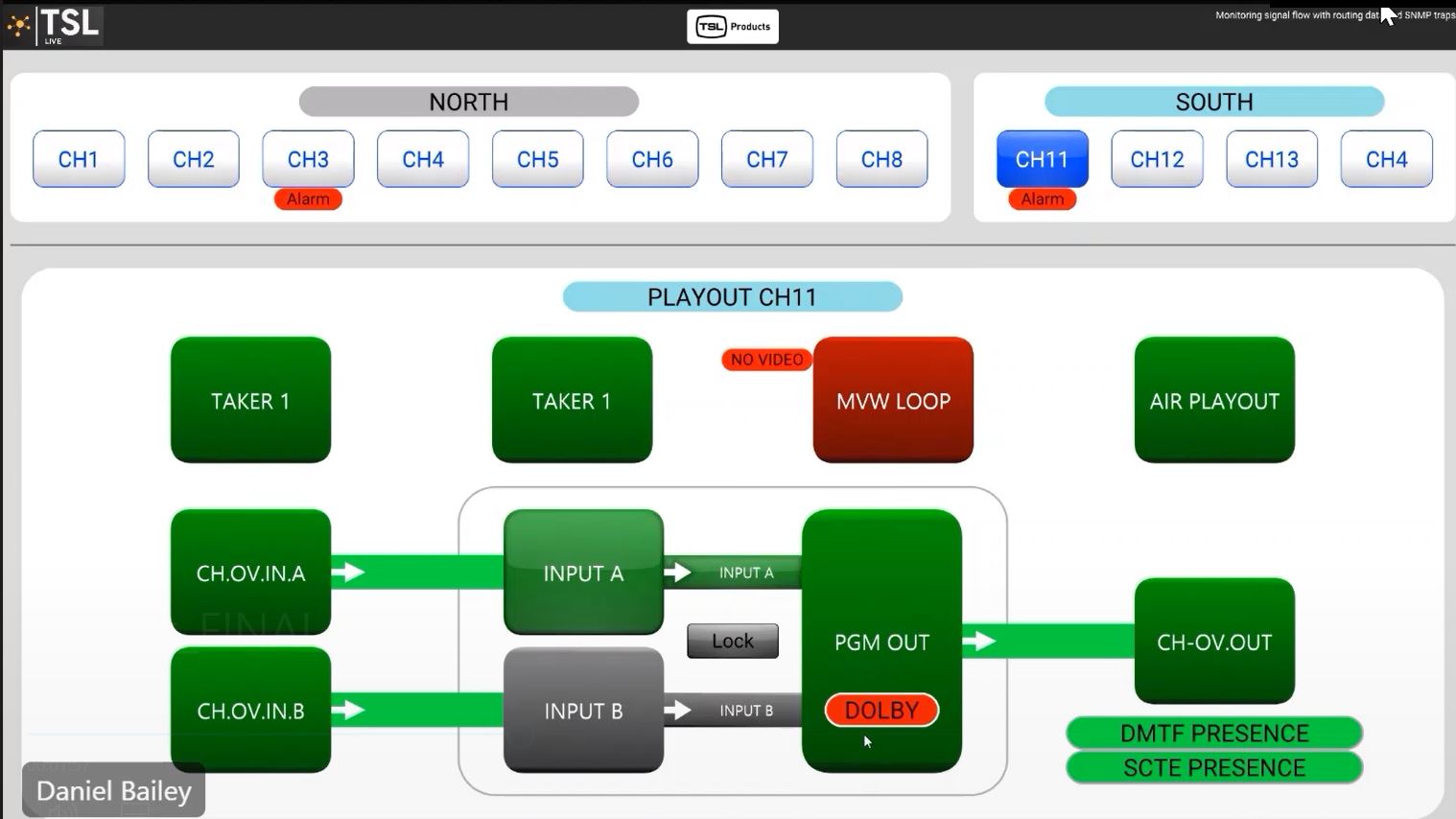TSL Unveils Latest Control Updates
The newest version of TSL Control is designed to deliver flexibility and cost-savings to users

MARLOW, U.K.—TSL has announced new updates to TSL Control that integrate the TSL and DNF product lines, putting all the company’s control solutions (including TallyMan, Flex Network, etc.) under one umbrella, TSL Control.
The move will allow customers to create a combined system, across product lines, that is designed to address their unique workflow needs, providing them with more flexibility and potential cost-savings.
“TSL Control is pure in its name and stands for the independence and integration capabilities that make our offering so compelling,” says Ian Godfrey, president of TSL Inc. and head of control at TSL. “The latest updates to our control offerings have been driven by the motivation to continue offering our customers the most flexible control solutions that ultimately make their jobs easier. At TSL, we strive to be supportive, problem-solvers, working in partnership with customers to deliver the tools they need to maintain ownership of their solutions, reduce costs and remain focused on making great content.”
Improvements to TSL Control include: the new GTP-42 Flex Network Controller; solutions in cost-effective IP routing and multi-network control, playout control and automation including SCTE and DTMF monitoring; and the new TallyMan Redundancy Package.
TSL continues to develop and expand its Flex Control network with the latest addition of the GTP-42 system controller, the company explained. It offers decreased power consumption, an easy-to-read front panel display and internal, dual-redundant power supplies. The GTP-42’s upgraded Linux core enables TSL to deploy an entirely virtualized GTP in any environment, whether in a facility, on COTS hardware, or in the cloud.
TSL has also developed a cost-effective solution for IP routing that are designed to ease the transition from traditional workflows to IP and hybrid systems. With capabilities including the grouping of audio, video and metadata flows for synchronized routing familiar to SDI operators, users can easily transition from IP and SDI-dominant areas of a facility, across buildings, or between outside broadcast (OB) trucks with no change to their workflow.
TSL’s Virtual Panels provide operators with traditional SDI, audio, video and metadata in one router, with the option of discrete signal view. Virtual Panels are completely configurable user interfaces that are best suited for unique workflow requirements, simplifying complex tasks into easily achievable operations.
The professional video industry's #1 source for news, trends and product and tech information. Sign up below.
Another cutting-edge solution from TSL’s control offering is the ability to streamline multi-network control across all third-party broadcast equipment, the company said.
TSL’s extensive knowledge of broadcast solutions and capabilities makes it easy to deploy a broadcast controller to manage a variety of solutions from a single operating position. With TSL Control, operators can manage facility lighting, engage robotic camera presets, drive any content to the back of the screen, and much more. Through a single interface, the operator has full access to the core of their control system and can manage NDI, SDI and 2110 routing all from the same control surface.
Also new to the TallyMan control system is full, dual redundancy, which offers the ability to replicate between two system controllers with automated failover. With the inclusion of all protocols, features and functionality at the time of purchase, TallyMan can easily be added to any pre-existing infrastructure, making the deployment of dual redundancy simple.
The TallyMan Redundancy kit includes dual redundant system controllers and the TallyMan redundancy panel (TMRP), where users can achieve direct control, manual failover of two controllers, and/or enable automatic failover mode in the event of failure, the company said.
George Winslow is the senior content producer for TV Tech. He has written about the television, media and technology industries for nearly 30 years for such publications as Broadcasting & Cable, Multichannel News and TV Tech. Over the years, he has edited a number of magazines, including Multichannel News International and World Screen, and moderated panels at such major industry events as NAB and MIP TV. He has published two books and dozens of encyclopedia articles on such subjects as the media, New York City history and economics.

